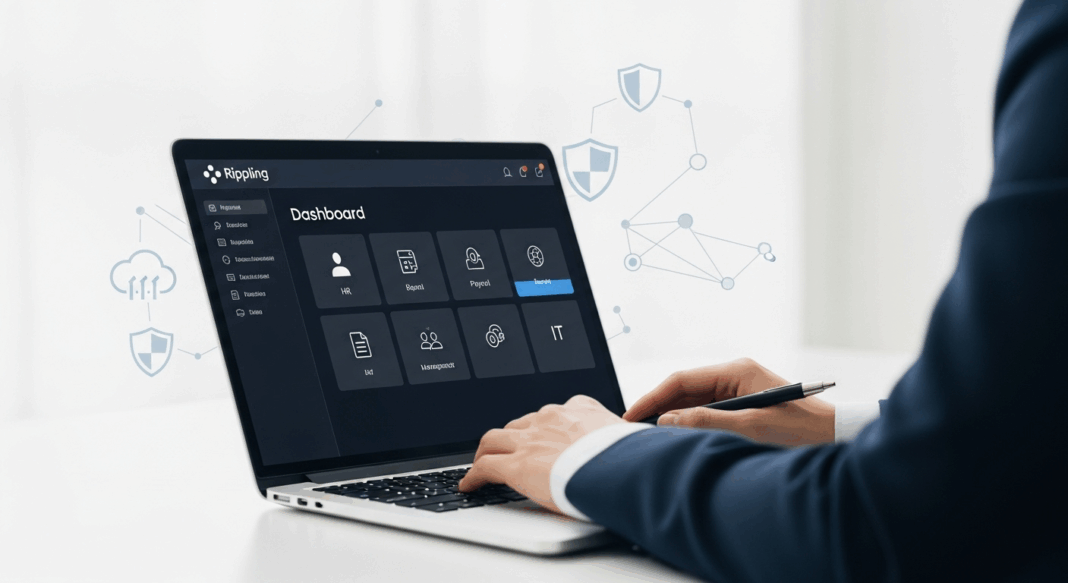It’s very important to know how the Rippling login works and what the best ways to use it are in a company setting where numerous systems need to work together without any problems. It’s helpful to know how the login process works, why it matters and how to fix typical problems, whether you’re an employee checking in for the first time or an administrator in charge of the login system.
What is the Rippling Platform?
Rippling is nothing but a cloud-based personnel management platform that integrates human resources, information technology, and finance into a single structure. In the field of human resource technology, it has experienced a remarkable rate of expansion since its establishment in San Francisco in 2016.
Through the use of this platform, businesses are able to manage their payroll, benefits, app permissions and even device security from a single intuitive dashboard. The login for Rippling is what serves as the primary entry point into this ecosystem, establishing a secure connection between individuals, processes and data.
Why the Rippling Login Matters
The procedure of logging in is somewhat more than simply a simple step of signing in. When it comes to assuring access, security and efficiency, it is an extremely important factor.
- One Login for All: Using a single password, users are able to access all of the connected applications through Single Sign-On (SSO).
- Strong Security: Enhanced security is provided by multi-factor authentication (MFA) and encryption.
- Better Productivity: A smooth login results in less downtime, which leads to increased productivity.
- Lifecycle Control: Access is automatically added or revoked as employees join or depart the company, according to the lifecycle control system.
More than anything else, these characteristics make day-to-day work more efficient, safer and simpler to administer.
How the Rippling Login Works
This is the typical flow of the Rippling login procedure, although the configurations can vary from company to company:
- Go to the Login Page: Visit the Rippling portal or app that your company has created.
- Enter Credentials: You will need to enter your username and password.
- Verify Identity: Authenticate your identity by approving with multi-factor authentication or a code, if necessary.
- System Check: Rippling is necessary for system check since it verifies permissions and device compliance.
- Access Granted: Access is granted and the dashboard loads with all of the tools that are linked.
For the purpose of ensuring the safety of firm information, each step ensures that only authorized users are able to access the system.
Features Encountered During Login
| Feature | Description | Why It Matters |
| Multi-Factor Authentication (MFA) | Requires a second verification factor beyond the password. | Strengthens security against unauthorized access. |
| Single Sign-On (SSO) | Allows one login for multiple connected apps. | Reduces password fatigue and improves convenience. |
| Device & Location Checks | Restricts logins from unapproved devices or regions. | Prevents suspicious access attempts. |
| Automatic Provisioning | Adds or removes employee access based on employment status. | Maintains compliance and security hygiene. |
| Password Vault (RPass) | Securely stores and shares credentials within teams. | Encourages safer password practices. |
Common Challenges with Rippling Login
The most reliable system is not immune to problems. There are a few that are quite common:
- Wrong Passwords: The majority of failed login attempts are caused by incorrectly typed or aged credentials.
- Device Blocks: Restrictions may be triggered by devices that are either new or unregistered.
- Integration Bugs: Linked applications may occasionally result in slow login times.
- Setup Complexity: Configurations can be highly complicated, which can be challenging for smaller teams to set up.
- Slow Support: The response time of the help desk can cause access recovery to be delayed.
The knowledge of these enables teams to resolve issues more quickly and prevents recurring lockouts.
Best Practices for a Secure and Smooth Login
Here are several practical recommendations to ensure a stable and safe Rippling login process:
- Use Strong Passwords: Pick ones that are both unique and difficult to guess.
- Turn On MFA: Turning on multi-factor authentication (MFA) adds an essential layer of security.
- Check Activity Logs: In the Activity Logs, look for any strange or unsuccessful efforts.
- Set Access Rules: Only permit logins from devices that have been approved.
- Educate Staff: The staff should be educated, and they should be taught to avoid phishing and exchanging credentials.
- Automate Access: Login permissions should be tied to HR onboarding and offboarding in order to automate access.
- Update Devices: Devices should be updated to ensure that the software is always up-to-date.
- Offer Fast Support: Make fast channels for assistance with logging in.
These practices, when implemented together, create a strong login environment that balances convenience with security.
Rippling Login for Administrators
Administrators are in charge of making sure that the login process goes well. They:
- Configure user permissions.
- Monitor sign-in activity.
- Control third-party app access.
- Use analytics in order to spot risky behavior or login failures.
Admins can use built-in analytics to find out which users are having problems signing in, spot bad security practices, and take steps to make the system more secure. This data-driven method helps businesses keep one step ahead of possible login-related threats.
Conclusion
The Rippling login is more than just a way to get into an app; it’s the control point for all of a company’s digital systems. When set up appropriately, it gives all employees easy, safe, and consistent access.
Companies may almost completely get rid of login difficulties by teaching their employees, keeping secure passwords, and automating access controls. The firms that do a good job of managing login systems are probably the ones that have higher productivity, data safety, and digital trust in general.
In today’s mixed workplaces, a safe and dependable Rippling login is not only helpful but also crucial for long-term business success.
Frequently Asked Questions (FAQ)
Q1: What is the official way to access Rippling?
A1: Users should visit their organization’s Rippling portal or use the Rippling mobile app to access their accounts securely.
Q2: What should I do if I forget my password?
A2: Click on “Forgot password” on the login page and follow the instructions to reset it using your registered email address.
Q3: Why does my login keep failing even with the correct password?
A3: Possible causes include expired credentials, account deactivation, or blocked access from unrecognized devices. Clearing the browser cache often helps.
Q4: Can I access my company apps without logging in multiple times?
A4: Yes. Rippling’s single sign-on (SSO) system lets users access multiple integrated applications with one successful login.
Q5: Is Rippling’s login secure?
A5: Absolutely. The platform enforces encryption, MFA, device verification, and conditional access policies to safeguard data.
Q6: What happens when I leave the company?
A6: Your login credentials are automatically deactivated, and all app access tied to your profile is revoked.
Q7: Can I log in from my phone?
A7: Yes. The Rippling mobile app supports secure login with biometric options such as fingerprint or facial recognition.
Also Read: FFR Login 2025 guide

I am a content writer with proven experience in crafting engaging, SEO-optimized content tailored to diverse audiences. Over the years, I’ve worked with School Dekho, various startup pages, and multiple USA-based clients, helping brands grow their online visibility through well-researched and impactful writing.


